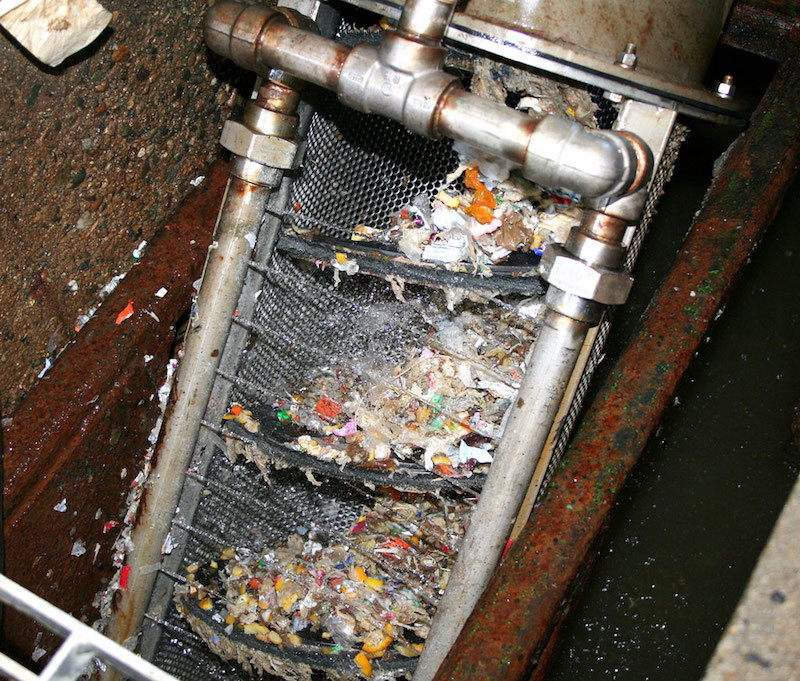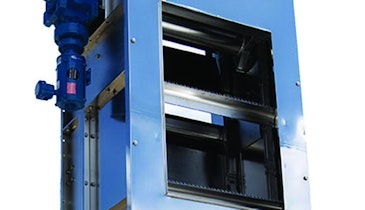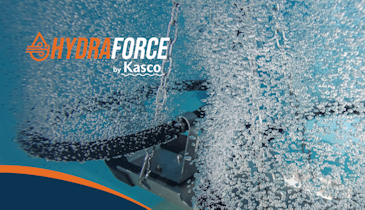Interested in Headworks?
Get Headworks articles, news and videos right in your inbox! Sign up now.
Headworks + Get AlertsA plant’s headworks plays a crucial role in the pretreatment influent for any wastewater treatment facility. It protects the operation of downstream equipment and enhances the efficiency of the overall wastewater treatment process. Because all wastewater debris starts at the headworks, proper screening and debris removal is imperative to the entire wastewater system. Pretreatment devices are designed to remove or reduce large solids like wood, cloth, paper and plastics, while also dealing with grit and excessive amounts of oil and grease.
Several different types of equipment can be used to meet these objectives, yet public works engineers should not make that choice lightly. There is no one-size-fits-all solution that can be applied to every headworks situation.
Matching the needs of the facility to the appropriate screen or debris reduction method is paramount for both protecting downstream equipment and ensuring screened-out solids are handled efficiently and effectively. The wrong choice can result in headworks systems that do not meet the required level of protection of downstream treatment processes, or a system that is too costly for the plant’s requirements.
Rightsizing headworks
Water treatment facilities in smaller towns and villages, as well as treatment works supporting institutions, prisons, resorts or remote facilities, have difficult choices to make when selecting their headworks systems. All require a solids-control strategy, but lower flows and smaller budgets limit the available equipment options. The necessary equipment is called upon to effectively screen out the solids and prepare them for disposal while meeting the financial constraints of the smaller facilities.
Manual bar screens
Some operators rely on manual bar screens to control the entry of large solids into their facilities. Historically, this technology was a workhorse of smaller plants, utilizing vertical bars with a spacing of 1 to 2 inches to catch debris. Manual bar screens represent an economical option with the ability to provide a base level of protection.
One of the biggest limitations of manual bar screens is the regular raking required of operators to keep the screen free of solids. With the recent increase in typical solid loading from disposable wipes in the waste stream, this unpleasant task poses a significant burden to many small facilities. The increased frequency of screen raking, particularly during storm flows, creates health and safety concerns for the operators, inspiring many locations to seek more modern options. Additionally, plants are often challenged by the vertical bars screening capture rate of solids, which is usually not sufficient to protect the plant.
Automatic bar screens
An alternative to a manually raked screen is an automated coarse screen. These products typically also use vertical bars to capture solids before removing the screenings with an automated raking system. This type of screen is significantly costlier than manual screens in both capital expense and operational costs. While the automated screens do eliminate the manual raking, they do not remove other challenging operating problems.
The installation of automated bar screens typically calls for civil work to modify channels, and can also require additional headroom in the headworks building to account for the automated raking system. In addition to the higher capital cost for the equipment, these modifications to existing infrastructure can quickly drive up the overall project cost.
The automated coarse screens also leave the facility with other challenges to overcome. First, similar to manual bar screens, the vertical screening design does not allow them to capture finer materials. Secondly, and perhaps more significantly, is the question of what to do with the materials that are screened off. Screened materials are wet and laden with fecal materials that are both odorous and difficult to dispose of. A solution to this problem is compacting equipment for the screenings. This, however, is an additional piece of equipment that must be purchased, installed and maintained.
Auger Monster
The middle-ground solution for a smaller facility is in-channel auger screens, such as the Auger Monster from JWC Environmental. This popular option fits into existing channels with little modification and provides the treatment plants with a fine screening solution as well as clean, dry and compacted solids — all at an attractive, reasonable cost.
The Auger Monster is an all-in-one headworks system that combines three technologies — a grinder, a fine screen and a compactor — to efficiently collect, clean and convey solids out of the channel. First, a powerful Muffin Monster grinder shreds solids and breaks open debris, allowing soft organics to flow into the treatment system. The shredded solids are then captured by a perforated screening trough and removed from the channel by a rotating auger. As the debris is removed, dual wash water zones rinse additional fecal material back into the treatment process. The dual helix auger then compacts and dewaters screenings before they are deposited — clean and dry — into a dumpster. Some facilities choose to use continuous bagging systems to fully eliminate odors and make disposing of the screenings even easier.
The innovative incorporation of a grinder into this system solves multiple issues for the treatment facility. First, it takes care of the large solids such as wood and other debris that may come to the plant’s headworks. Next, it shreds the disposable wipes and rags that, if not shredded, can rope together in the auger and cause a system failure. Finally, by shredding all the debris, captured organics are broken free and allowed to pass into the treatment system rather than be trapped in the screened material.
The fine screening capabilities of the Auger Monster, which typically uses a 2 to 6 mm perforated plate, provide facilities a significantly higher capture rate compared to vertical bar screens. This translates to less trash landing in the clarifiers and sludge systems, where it can clog pumps, valves and other treatment equipment.
The Auger Monster’s ability to wash and compact solids offers plants a solution without having to buy an additional piece of equipment — a meaningful bonus to facilities with constrained operating budgets. Often a smaller plant will not have the capital for a screening washer and they must contend with smelly, wet screenings that attract both vermin and odor complaints from the community. By washing and compacting the solids, the handling and transport of the screenings is simplified and odor-free.
A popular option for small, established headworks facilities, wastewater screening systems offer advanced debris reduction capabilities that can also fit easily into cramped spaces. The systems screen, clean and convey debris straight up and out of the sewer system, protecting the pumps downstream and leaving soft organics in the water.
The Auger Monster has proven itself as a preferred option for institutions that confront high solids loading from self-generated sewage streams. Prisons are a common user of these systems, as they are challenged with a wide variety of tough flushed materials that must be removed.
Prison utilizes Auger Monster
In the more than 62 years Leo DuBois has served as the manager of the wastewater treatment plant at the Bridgewater Correctional Complex in rural Massachusetts, he’s observed a curious stream of flushed debris. Dealing with the prison’s wastewater is a unique challenge, as inmates treat their toilets like trashcans. Everything from cigarette butts to jumpsuits and plastic baggies get sent down into the pumps to be weeded out at DuBois’ headworks facility.
To combat the onslaught of solids threatening to clog his pumps, DuBois installed a modular headworks system into his small facility to remove the large amount of debris flushed by inmates. Prior to installation, treatment plant staff spent hours every day clearing pumps blocked with towels, jumpsuits, trash, shoes and bags. Now, the system, made up of a grinder, fine screen and compactor, shreds and removes the debris before the solids can choke the pumps, keeping the plant staff out of the pumps and the headworks facility operating smoothly.
Integrating high-flow grinding, cleaning and dewatering technology into a compact footprint, in-channel auger screens like the Auger Monster provide high efficacy in solids removal. As DuBois discovered, a screenings system is an excellent solution for maintaining and improving the solids screening and removal efforts of modest headworks facilities.
As the first line of defense, screening systems are the protectors of the wastewater treatment process: grinding, compacting and conveying material out of the wastewater, eliminating opportunities for pumps to clog and subsequently stall the process. With a screening system in place, headworks facility operators can rest easy knowing their operations are efficient and free of debris.
The right choice
The appropriate solutions for a facility’s headworks screening must take into consideration the goals and the budget, as well as the expected flows and solids loading at the installation. There is not one piece of equipment that is the perfect fit for every headworks situation. Getting the installation right is paramount for both protecting downstream equipment and ensuring screened out solids are handled efficiently and effectively. The wrong choice can result in a headworks system that does not meet the required level of protection of downstream treatment processes, or a system that is too costly for the plant’s requirements. JWC Environmental is always available to consult with engineers and facility operators to help them make the right choice for their unique situation.







